How can wing design improve aircraft flight?
Aviation technology has come a long way since the Wright brothers made the first successful motor-powered flight in 1903. Today, aeronautical engineers are focused on improving the efficiency of aircraft, by designing longer, thinner, more flexible wings. At the University of Bristol, UK, Dr Punsara Navaratna and Dr Alessandro Pontillo are developing new testing and modelling techniques for novel wing design and the added complexities of a flexible aircraft.
Talk like an aeronautical engineer
Aerodynamics — the study of air flow and its interaction with a body moving through it
Aeroelastic model — a mathematical representation of a flexible structure over which air is flowing, used to study its dynamic response to aerodynamic, structural and inertial (mass) loads, i.e. to study its ‘aeroelastic’ behaviour
Drag — the force which opposes the motion of an aircraft through the air, generated by every part of the aircraft
Induced drag — drag caused by the generation of lift (because the distribution of lift is not uniform across a wing) which is a large component of the overall drag
Lift — the upwards force generated as air flows over a wing
Linear — when two variables plotted on a graph are related by a straight-line
Non-linear — when two variables plotted on a graph are not related by a straight-line
Thrust — the push force that moves something forward, the opposite of drag
Wing root — where a wing is attached to an aircraft
In the 15th century, Leonardo da Vinci produced one of the first flying machine concepts, taking the first step towards fulfilling the human dream of flight. However, it took over 400 years for this dream to become reality. It was not until 1903 that Orville and Wilbur Wright successfully flew the first motor-powered aircraft. Since then, aviation has really taken off. Today, aeronautical engineers are responsible for the exciting new developments in aircraft technology, from improving the design of commercial aeroplanes to creating drones that can fly on Mars.
To improve fuel efficiency and reduce emissions, aeronautical engineers are exploring the potential of making aircraft wings longer, thinner and more flexible. When developing new aircraft designs, aeronautical engineers test models in wind tunnels and apply numerical modelling to predict and analyse their behaviour. However, for these new, flexible wings, current testing methods are not adequate for the added complexities their design brings in aircraft flexibility and its interaction with overall aircraft motions. This is why Dr Punsara Navaratna and Dr Alessandro Pontillo, Research Associates in aeronautical engineering at the University of Bristol, are developing new testing and modelling techniques to investigate the flight dynamics of flexible aircraft in a wind tunnel environment.
How are new aircraft developed and tested?
“A wind tunnel is one of the most valuable tools used in experimental studies of aircraft,” says Punsara. A wind tunnel consists of large tubes with fans that produce a controllable stream of air. By placing a scaled model of an aircraft in the tunnel, engineers can assess how it behaves when exposed to airflow and use this knowledge to predict how a full-sized aircraft would behave.
Usually, testing is done by placing a stationary model in the wind tunnel, but at the University of Bristol, a new ‘manoeuvre rig’ has been developed that allows engineers to move the model aircraft while it is in the airflow. “The model aircraft can be ‘flown’ in the wind tunnel, similar to how a real aircraft would fly,” explains Punsara. Sensors on and around the model collect data on how the air moves around the aircraft and how the aircraft itself responds to the airflow, which can then be compared with numerical models of how an aircraft is expected to behave.
Aeronautical engineers create two different numerical models to test aircraft designs – structural models and aerodynamic models. “The structural model captures the aircraft’s structural stiffness, whether it is rigid or flexible,” explains Alessandro. “The aerodynamic model captures the behaviour of the airflow relative to the aircraft and is used to calculate the forces the air creates on the aircraft.” These two models can then be combined, along with mass effects, to create an ‘aeroelastic’ model of an aircraft.
Why are flexible wings being developed?
It is the shape of an aircraft’s wings that cause it to fly. As aeroplane wings are curved on top and flatter on the bottom, air flows faster over the top of the wing than it does underneath it. This reduces the air pressure above the wing, resulting in an upwards lift force and causing the plane to fly.
Reference
https://doi.org/10.33424/FUTURUM331
Aeronautical engineers are looking to make flying as efficient as possible, in part to reduce carbon emissions. A longer and thinner wing reduces induced drag, which means that less thrust is needed to counteract the overall drag. As thrust is generated by the aeroplane’s engines, less drag means less fuel consumption.
However, the structure of long, thin wings will be heavier than that of an equivalent conventional wing, as a longer wing will have greater bending at the wing root. “One way of keeping weight down is to allow the wing structure to be more flexible,” says Punsara.
How are flexible wings tested?
Understanding how these flexible wings behave and interact with the whole aircraft is a new challenge. It is important to examine the whole aircraft as the flexibility of the wing can significantly affect characteristics such as passenger comfort and the pilot’s workload in flying the aircraft. “These wings require the development of new numerical tools that have the capability of capturing the highly non-linear characteristics of the wing, which typical linear models cannot capture,” explains Alessandro. After creating new computer models of flexible wings, he and Punsara must then conduct experiments to validate them.
Typically, flexible wings have been mounted on the side of a wind tunnel, and then the angle of the wing relative to the airflow is changed to measure wing deformation. Using the ‘manoeuvre rig’, the full aircraft can be tested instead, and the interaction and coupling of the flexible wing with the aircraft body can be examined. Punsara and Alessandro have developed a new testing technique for investigating the flight dynamics of a flexible aircraft in the wind tunnel. This new technique allows unexpected phenomena to be identified, such as those related to the coupling of the flexible wing dynamics with the flight mechanics behaviour. It also allows new aircraft configurations to be tested, as well as verifying numerical models to support aircraft design.
So far, Punsara and Alessandro have manufactured three wings with different levels of flexibility. They are currently putting them through wind tunnel testing, allowing them to study a range of structural properties. They have also developed a new numerical model which rapidly simulates a flexible wing connected to a rigid aircraft. This model can capture the non-linear effects of big wing deformations.
Where else can these techniques be applied?
The knowledge gained from testing and modelling flexible-winged aircraft can also be used to test wind turbine blades. As these blades are very long and thin, they are similar to flexible aircraft wings and can be modelled in the same way. “Wind turbine blade dynamics can potentially couple with the turbine tower motions in a similar way to a wing interacting with the rest of the aircraft,” says Punsara, explaining how aircraft testing and modelling techniques can be extended to other applications.
Aeronautical engineering is at the forefront of modern technology and the future of the sector is wide open. Punsara and Alessandro’s work is an essential contribution to the continued development of aircraft, as well as addressing the environmental challenges facing the aviation industry.
 Dr Punsara Navaratna
Dr Punsara Navaratna
Research Associate in Aeroelastic Modelling
Field of research: Experimental Flight Dynamics
Dr Alessandro Pontillo
Research Associate in Experimental Flight Dynamics
Field of research: Flight Dynamics of Flexible Aircraft
Department of Aerospace Engineering, University of Bristol, UK
Research project: Developing new testing and modelling techniques for exploring flight dynamics of flexible aircraft within a wind tunnel environment
Funder: Engineering and Physical Sciences Research Council (EPSRC)
Other team members: Professor Mark Lowenberg (Principal Investigator), Professor Jonathan Cooper, Dr Djamel Rezgui, Professor Simon Neild
ABOUT AERONAUTICAL ENGINEERING
Aeronautical engineering concerns the science of flight and the designing, manufacturing, testing and operating of flight-capable machines. It is one of the two arms of the aerospace engineering field. The other arm, astronautical engineering, includes vehicles for space flight, such as satellites and rockets.
What topics do aeronautical engineers work on?
There is a broad range of areas for aeronautical engineers to work in. Aerodynamics is an important field of study as it impacts aircraft performance, such as range and fuel efficiency. Flight dynamics investigates the ‘quality’ and stability of aircraft flight. Engineers are also involved in avionics (the electronics used for aviation) and might find themselves designing or testing control systems, fuel systems or landing gear. Modern aircraft use composite materials to reduce weight, thereby saving fuel and reducing emissions, making structural design and material selection very important current topics in aeronautical engineering.
What skills do aeronautical engineers have?
Aeronautical engineering is multidisciplinary, with different skills, topics and areas of interest overlapping and interacting with one another. Engineers need to have strong mathematical, analytical and problem-solving skills. “The process of making, trying and (often) failing is what distinguishes a good engineer from a lazy one. Never give up!” says Alessandro.
Having background knowledge of the big areas of engineering will help in whatever field of expertise you specialise in. Aeronautical engineers must understand engineering physics, such as thermodynamics, fluid flow, structures, mechanisms and feedback control. Mathematics and numerical computation skills are also essential, to derive, run and analyse models. Engineers will also need to master Computer Aided Design (CAD).
Anything that flies is subject to very strict certification requirements by the relevant authority, for the safety of everyone involved. This means the development and innovation of new technologies must face a long and expensive certification process. “It’s up to engineers to find compromises between the great invention and the need to produce something safe, usable and cost-effective in a reasonable time scale,” says Alessandro.
Pathway from school to aeronautical engineering
• Studying maths, physics and computing at school will be extremely useful for a career in engineering.
• In the UK, you can become an aeronautical engineer by studying a university degree or college diploma, or by completing an apprenticeship: nationalcareers.service.gov.uk/job-profiles/aerospace-engineer
• Many universities offer bachelor and master’s degrees in aerospace and/or aeronautical engineering.
• Aerospace companies in the UK that offer apprenticeships include Airbus, Rolls-Royce and BAE systems.
• UK citizens can also pursue aeronautical engineering through the Royal Air Force: recruitment.raf.mod.uk/engineering
• Careers in Aerospace offers detailed information about pursuing a career in aeronautical engineering and the routes you could take to achieve this: www.careersinaerospace.com
Explore careers in aeronautical engineering
• The Royal Aeronautical Society (www.aerosociety.com) has free membership for students and a wealth of information about careers in the field (www.aerosociety.com/careers-education). Its magazine, Career Flightpath, is dedicated to career development in aviation: www.aerosociety.com/careers-education/resources/career-flightpath-magazine
• The Faculty of Engineering at the University of Bristol conducts various outreach events, including some focusing on aerospace activities: www.bristol.ac.uk/engineering/outreach
• With a career in aeronautical engineering, the sky is not the limit! You could find yourself designing aircraft for other planets, such as NASA’s Ingenuity helicopter on Mars: www.nasa.gov/aeroresearch/nasa-aeronautics-on-mars-and-earth
• The UK aviation and aerospace sectors have launched a Charter for Women to promote gender equality in the field: www.gov.uk/government/publications/women-in-aviation-and-aerospace-charter/women-in-aviation-and-aerospace-charter
• Prospects provides information about the different roles you might do as an aerospace engineer, and the salary you can expect: www.prospects.ac.uk/job-profiles/aerospace-engineer
How did Punsara become an aeronautical engineer?
When I was younger, I was always making things out of LEGO and Meccano, or building aeroplanes from plastic bottles, cardboard and lots of imagination! I was inspired to become an aeronautical engineer by my father. He was a mechanical engineer, and I wanted to follow in his footsteps.
My career has enabled me to spend my time learning more about the things I love. My PhD has been the highlight of my career, so far, and I have been lucky enough to work with many great thinkers. I have learnt so much from each of them.
In the future, I would like to continue my career in research and deliver insights into new investigative tools to aid the process of future aircraft design.
Alessandro and I won the Engineering Faculty Post-Doctoral Research Prize for a previous project involving a flexible wing skin design. Having our work recognised gives us motivation to pursue different areas of research interests, especially knowing that we will receive support from the university.
I think that having a logical thinking style has helped me as an engineer as problem-solving is at the heart of aeronautical engineering. The ability to think creatively is also useful as it is important to think outside the box to find creative solutions to problems.
Punsara’s top tips
1. Follow your interests, and remember to have fun!
2. Keep persevering in your own journey.
3. Don’t be afraid to ask for help, resources or guidance.
How did Alessandro become an aeronautical engineer?
I was fascinated with how things worked when I was young. I loved taking things apart, so my mum had to hide household appliances from me! I was always inspecting toys’ circuits and gears and reusing electronics in other projects that got more complicated and advanced as I learnt more. Although my projects failed most of the time, I learnt a lot through this process, and it was a great training for my imagination!
When I was younger, I wanted to be a pilot. When that didn’t work out, it was natural for me to still choose a career in aviation. My work in aeronautical engineering is what I want to do for the rest of my life. It has enabled me to travel widely and enjoy many different cultures and traditions. I have met interesting people and amazing scientists from whom I have learnt so much.
I am inspired by Nikola Tesla, who dedicated his life to science and engineering. His ideas were well ahead of the times, and he never gave up pushing the boundaries of knowledge. The technology that he developed one hundred years ago is still powering our houses and offices today!
I think that engineering merges art and science. The development of the technology that we use every day was often the result of very futuristic and artistic thinking. For example, when the Wright brothers created the first aircraft, they ran downhill with their machine, without even knowing whether it was going to fly!
Alessandro’s top tips
1. Don’t be afraid to fail; you can learn so much from it.
2. Working in science can be tough, but the reward is worth it.
Do you have a question for Alessandro or Punsara?
Write it in the comments box below and Alessandro or Punsara will get back to you. (Remember, researchers are very busy people, so you may have to wait a few days.)

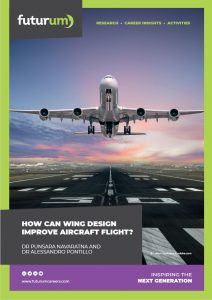
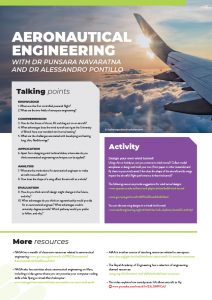
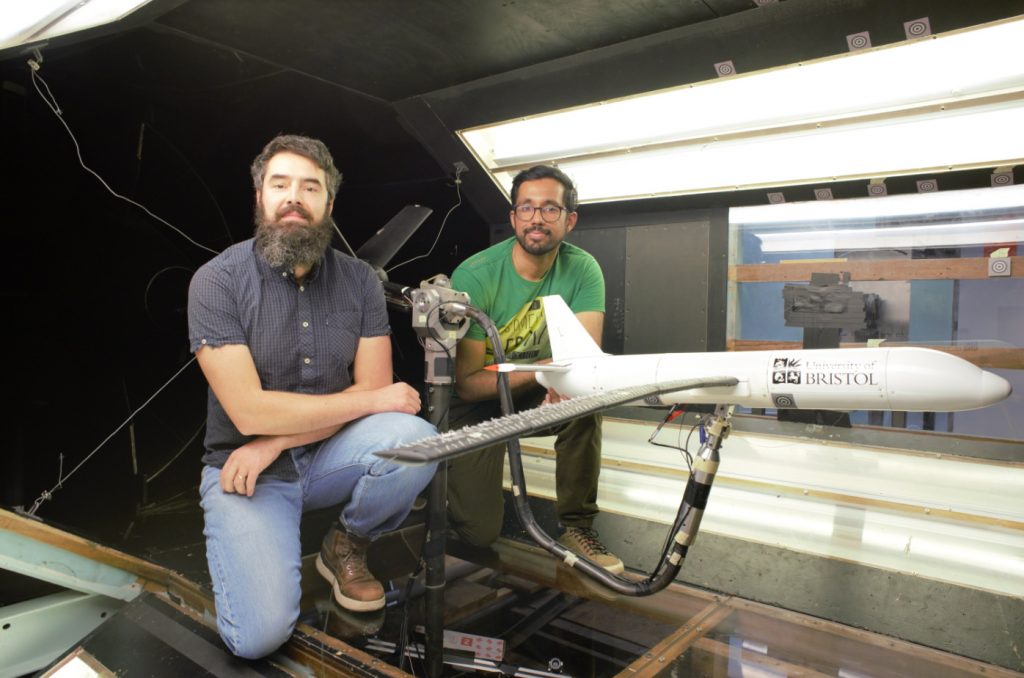

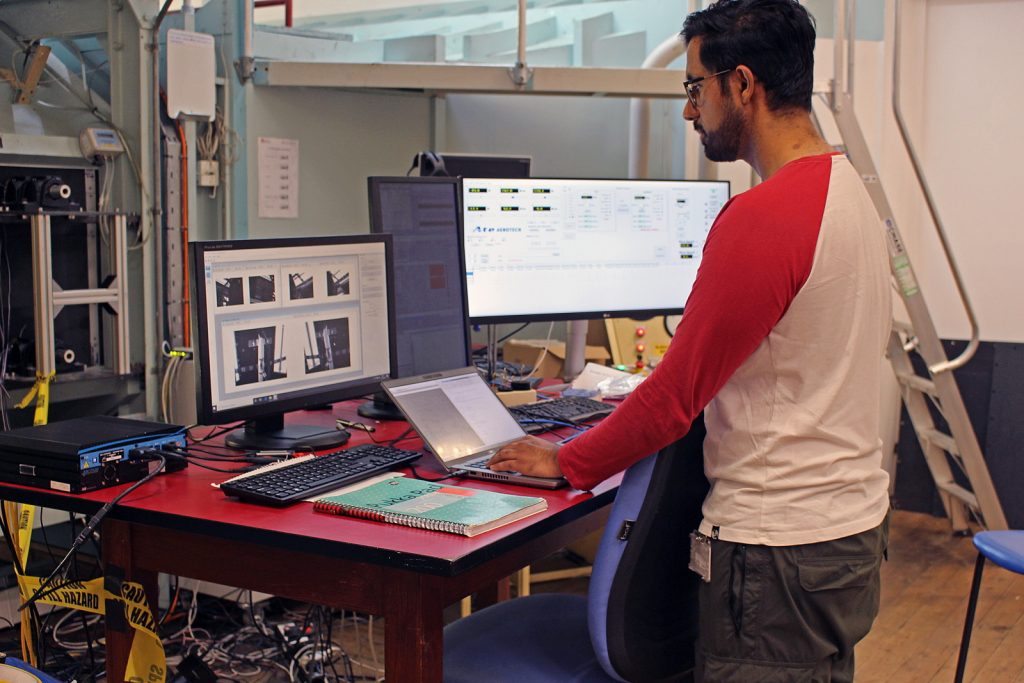
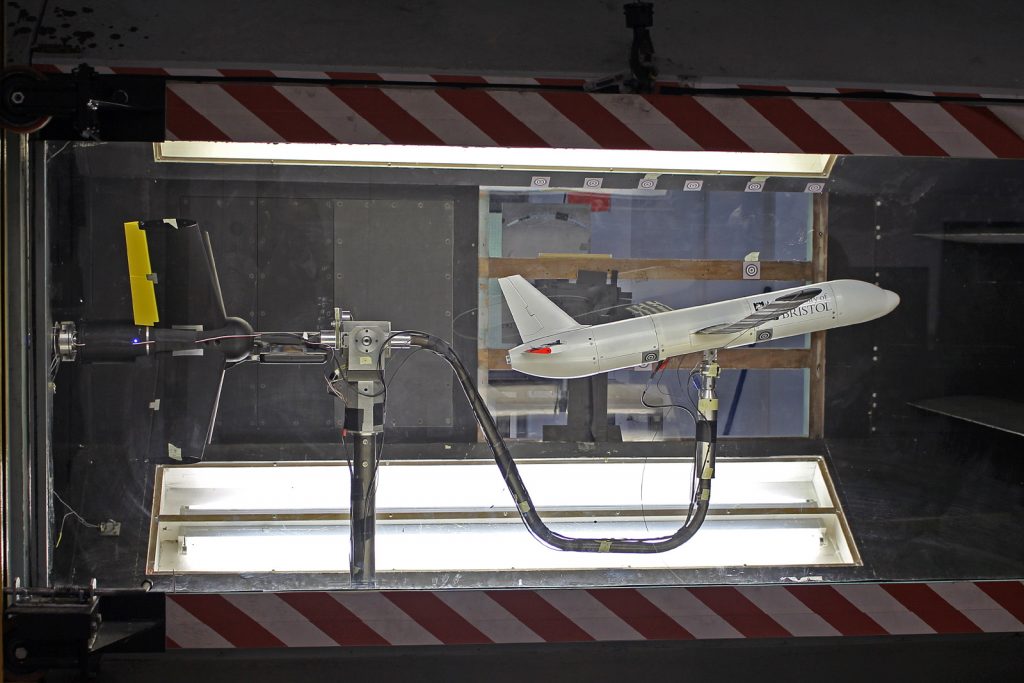


Hello, I’m a software engineer that works for a defense contractor that wants to implement a new wing into one of our aitcrafts. However we would like to test this wing design before giving an okay to it. How plausible is it to implement your manoeuvre rig test platform and how accurate are the tests that you run ? And by plausibility I’m more so concerned with cost and time to perform the experiment (as we are on a time crunch).
Hello Chuck, thank you for your interest. This project used the manoeuvre rig to investigate the effects of wing flexibility on the flight dynamics of the overall aircraft through free-motion testing, so testing new wings for such objectives is very possible. If static aerodynamic measurements are of interest, conventional load balance on a rigid support would be more appropriate. In terms of accuracy, the experiments have shown agreement in general trends when compared with numerical predictions. In general, accuracy would also depend on factors such as scaling the model relative to the full-scale aircraft, tunnel size and flow characteristics. The length of time and cost required will depend on the complexity of the model to be manufactured. For context, the development time for the full aircraft model used in this project was about two years, which includes numerical modelling, design and optimisation of the wings, manufacturing, and separate semi-span wing experiments.